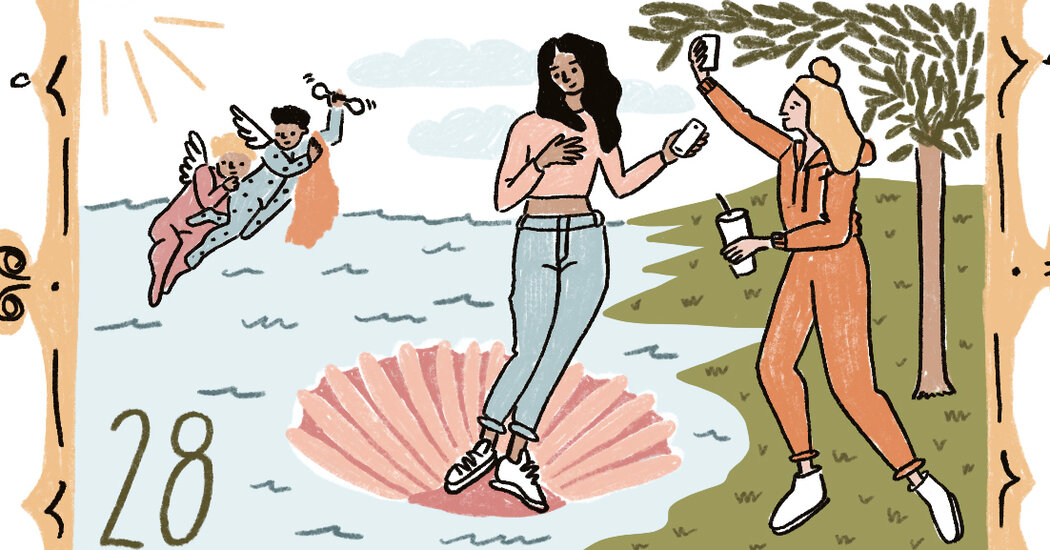You’re no doubt familiar with the feeling of walking into a New Year’s Eve party and confronting a very particular temporal melancholy: the sensation that you and everyone there are doomed to repeat such an arbitrary occasion for the rest of our lives.
My parents had their own solution to this annual dilemma. They are both visual artists, and so I grew up in a studio home, where paint was flying onto walls, the smell of turpentine wafting up through the floorboards. The process was often messy. In the 1990s — that retrospectively innocent time of self-expression — my parents would host crazy tableau vivant parties each New Year’s Eve. They would choose a Renaissance painting chock-full of figures in various states of undress and invite all of their friends to come over and essentially become the painting. Everyone would work feverishly for four or five hours, painting backdrops, donning wigs and makeup, sewing costumes, fashioning donkey heads, and then at midnight the picture of the tableau would have to be taken, no matter what state of chaos the scene was in.
I was always the youngest person in the room and I would often end up being the donkey or the partially obscured lutist or a plant. In “The Head of Cyrus Brought to Queen Tomyris” by Peter Paul Rubens, I was the severed head of Cyrus himself, presented triumphantly to the queen over a bowl of fake blood. I had to lie on the floor for hours, my neck propped just so, until I began to believe that my head had in fact come off and I was now of separate mind and body. In that final midnight picture, I am barely visible, obscured in shadow and not quite of this world, yet everyone in the tableau is staring at me, or at least at the idea of my body-lessness, their expressions varied, each with their own set of motives, sorrows and delights.
My memories of these parties are strong. Children are keen observers of adults having fun; it’s a bit like watching your parents and their friends bounding around with the unconscious enthusiasm normally reserved for kids at the playground. The communal process of recreating a fictional moment from a 500-year-old oil painting brought an immediacy to the proceedings that was universally delightful. We were all very much in the present, new year be damned.
Yet I think what has stuck with me more than anything over the years is that weightless sense of midnight surrender. When the clock struck 12, wherever you were in the process, that was the image. And that was good enough. And sometimes it was perfect, no matter if the donkey still only had one eye. The new year would begin under the gateway of this wobbly sublime. I didn’t know it at the time, but this was the artist’s process at its best, its most generative, flailing and welcoming. Such generosity has guided me for the rest of my life.
Sumber: www.nytimes.com
